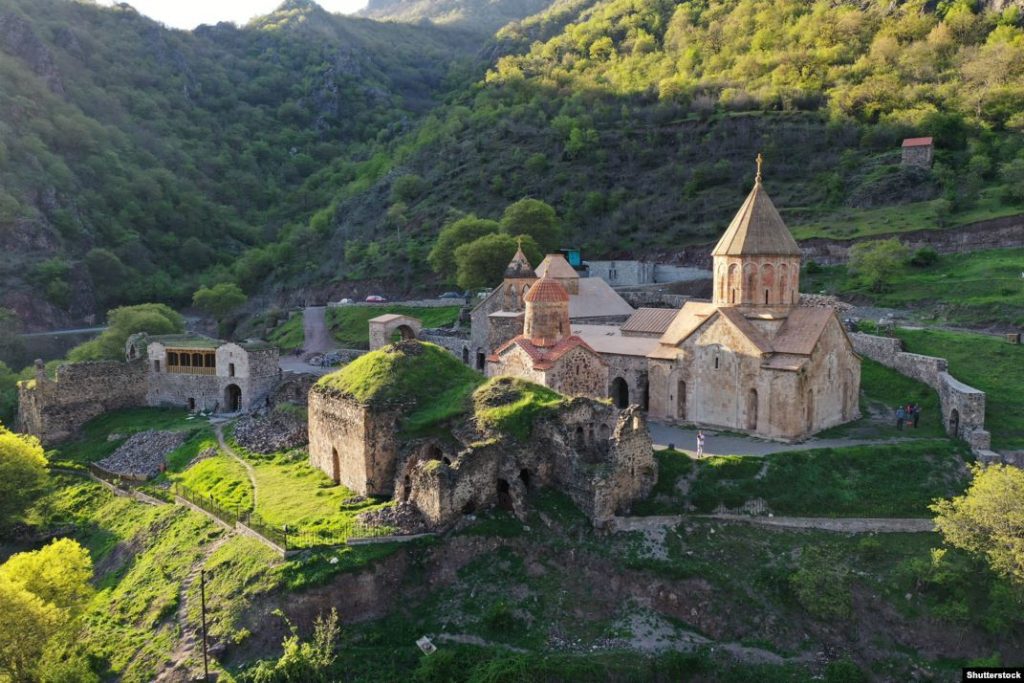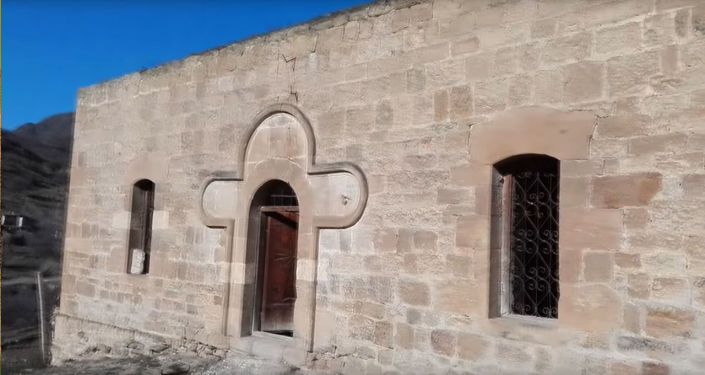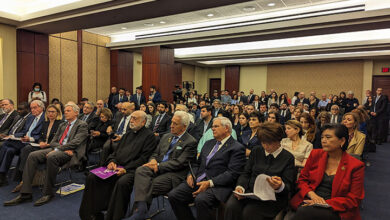
In the 2021 Report on International Religious Freedom the US Department of State documents Azerbaijan’s ongoing destruction of Armenian monuments and refers to the attempts to “Albanize” the Armenian heritage in territories under its control.
The reports quotes a bishop of the Armenian Apostolic Church as saying that, since May, the government refused access of Armenian pilgrims to a monastery in the territory, which has been under Azerbaijani control after the 2020 war.
The reports reminds that in a resolution adopted on September 27, 2021, the Parliamentary Assembly of the Council of Europe (PACE) condemned the damage “deliberately caused to cultural heritage during the 6-week war, and the deliberate shelling of the Holy Savior (Ghazanchetsots) Cathedral in Shushi, and “the destruction or damage of other churches and cemeteries during and after the conflict.”

The resolution also stated PACE remained “concerned, in the light of past destruction, about the future of the many Armenian churches, monasteries, including the Dadivank monastery, and cross-stones and other forms of cultural heritage which have returned under Azerbaijani control.” The resolution expressed “concern about a developing narrative in Azerbaijan promoting a ‘Caucasian Albanian’ heritage to replace what is seen as an ‘Armenian’ cultural heritage.”
“There were numerous reports during the year of vandalism and destruction of Armenian cultural and religious sites, as well as deliberate actions by the government to sever and distort the connection of religious sites to their Armenian heritage. Government actions and rhetoric stating churches were “Caucasian Albanian” prompted international observers, Armenian officials, civil society representatives, and the Armenian Apostolic Church to express grave concerns about the preservation of Armenian ties to historical and religious sites now under Azerbaijani control,” the State Department repot reads.
For example, it notes, on May 4, the Ministry of Foreign Affairs stated the Azerbaijani-funded reconstruction of the Holy Savior Cathedral in Shushi was “in accordance with the original architectural style in order to restore the historical image” of the city and attributed renovations of the site to reflect “Caucasian Albanian” heritage. Armenian officials said such statements attempted to conceal the church’s Armenian roots and structure, including the original spire. In a letter to UNESCO, Armenia’s acting Minister of Education, Science, Culture and Sports Vahram Dumanyan accused Azerbaijan of actively implementing “a policy of falsification of historical facts” by calling the sites of Armenian cultural heritage in newly returned territory “Caucasian-Albanian.” On September 27, Caucasus Heritage Watch (CHW) reported the Azerbaijani government embarked on an extensive campaign after the November 2020 ceasefire to claim Armenian heritage sites either do not exist or have “Caucasian Albanian” origins.
The report also reminds that following the November 2020 ceasefire, leaders of the Armenian Apostolic Church requested Russian peacekeepers protect the medieval Dadivank Monastery in the district of Kealbajar. The government initially allowed Armenian pilgrims to visit the church, but access became increasingly difficult throughout the year. According to media reports and Armenian Apostolic Church authorities, two groups of pilgrims were denied access to the monastery in February and April. Azerbaijani authorities cited COVID-19, flooding, and road damage as reasons for denying access to groups of pilgrims who were ready with Russian peacekeeper escorts to visit the monastery, according to the Armenian Apostolic Church. By year’s end, in addition to the monastery, no Armenian pilgrims had been permitted visits to any religious site in Azerbaijani-controlled territory (where no Russian peacekeepers were present) since May 2.

The State Department notes that on May 26, BBC reported the removal of a cross atop St. Yeghishe Armenian Church in Mataghis. A video reposted in March by Armenia’s ombudsman Armen Tatoyan on social media had shown soldiers wearing Azerbaijani and Turkish insignia desecrating the church.
“In June, The Art Newspaper published a report using satellite images that detailed the destruction of medieval Armenian churches in Agulis, Nakhchivan. The churches were seen in 1977 images but were missing in images from 2016 and 2019. The destruction included Surb Stepanos (Saint Stephen), likely founded in the 12th to 13th centuries, the medieval Surb Tovma (Saint Thomas), Surb Kristapor (Saint Christopher), Surb Hovhannes Mkrtich (Saint John the Baptist), and other ancient churches, such as Mets Anapat Surb Astvatasatsin (Greater Hermitage Holy Mother of God) and Surb Hakob Hayrapet (Saint Jacob of Nisibis). The Art Newspaper also chronicled the destruction of Armenian heritage throughout Nakhchivan, which once included 89 churches, 5,840 cross-stones, and more than 22,000 tombstones, according to documentation from 1964-87 collected by independent researcher Argam Ayvazyan. Because religion and ethnicity are closely linked, it is difficult to categorize many incidents as being solely based on religious identity,” the State Department said.








